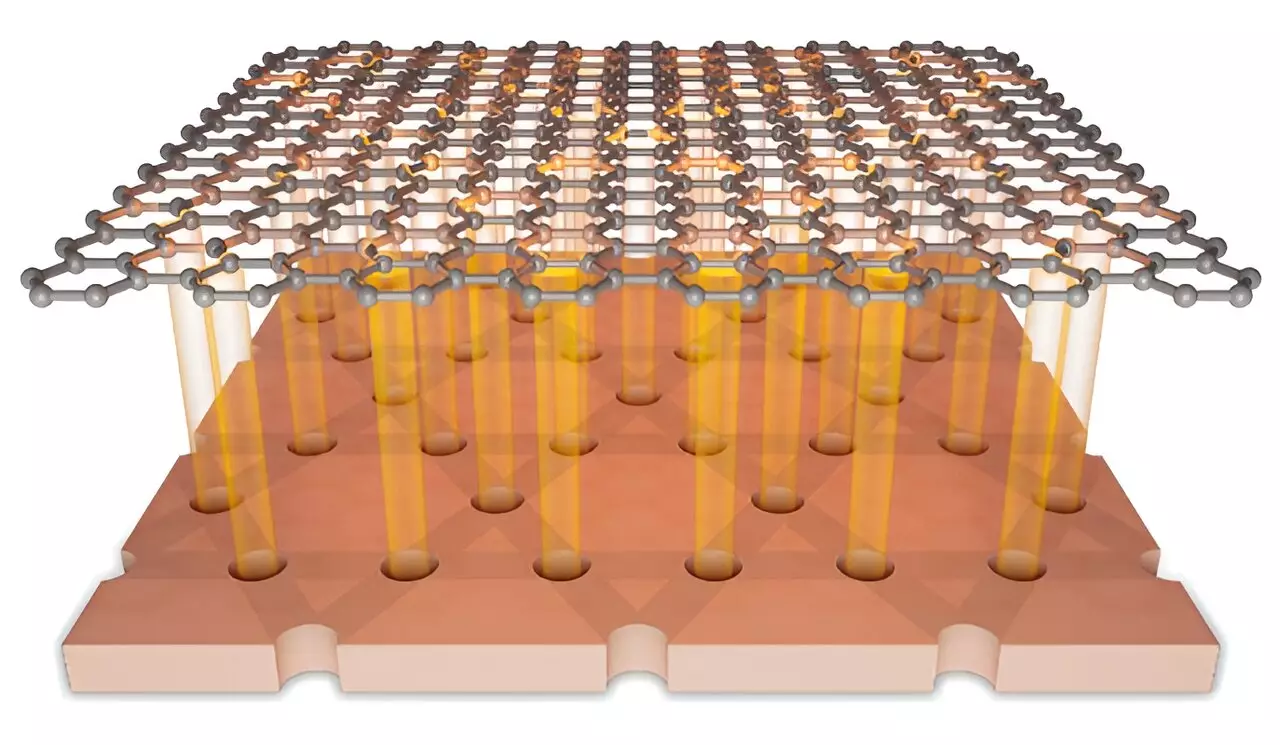Recent developments in the field of condensed matter physics have consistently spotlighted graphene due to its exceptional electronic properties and potential applications in next-generation electronics. However, effectively tailoring these properties remains a crucial challenge, given the limitations of existing band engineering techniques. A new study, published in Physical Review Letters, introduces an innovative approach that employs artificial superlattice fields to manipulate electronic bands in graphene. This breakthrough could pave the way for unprecedented control over electronic properties, transcending traditional methods that have often constrained researchers.
Historically, band structure engineering has relied on methods such as heterostructures, interfacial stress, and alloying. Although these techniques have contributed significantly to the understanding of electronic properties, they are hindered by rigid parameters for modifying band structures. One prominent limitation is the inability to provide real-time, continuous adjustments. With the introduction of van der Waals (vdW) materials, particularly graphene, researchers have the opportunity to explore new territories in band modification using gating and moiré heterostructures. However, achieving precise and selective control of electronic bands remains a persistent hurdle.
Innovative Approach: The Kagome Superlattice
To overcome these limitations, the research team devised a novel strategy by implementing an artificial kagome superlattice. This unique structure is characterized by an extraordinary period of 80 nanometers, which allows for the manipulation and folding of high-energy bands into a regime that is accessible for experimental observation. The primary innovation lies in the high-order potential engineered within the kagome superlattice framework. This potential introduces a new paradigm for band modulation, permitting researchers to selectively manipulate the electronic dispersion characteristics in graphene.
The in-depth fabrication process of the kagome superlattice involves standard van der Waals assembly and electron beam lithography techniques, resulting in a precisely designed lattice pattern that acts as a local gate for the graphene layer. This meticulous design enables independent tuning of both the artificial potential strength and the carrier density by varying the voltage applied, thus offering a robust tool for exploring the intrinsic properties of graphene.
One of the most compelling outcomes of this study is the ability to observe and manipulate the reshaping of spectral weight across multiple Dirac peaks. The application of an external magnetic field serves as an intriguing variable, whereby it weakens the influence of the kagome superlattice on the band’s structure; consequently, this allows for reactivation of the intrinsic Dirac band, creating yet another layer of control for researchers.
The findings not only enhance our understanding of electronic structures but also open avenues for exploring novel physical phenomena that could emerge from such refined manipulation. The study’s ability to employ an artificial superlattice to adjust band dispersions reflects a significant advancement in the arena of material science.
The implications of these findings extend well beyond theoretical applications. This newly conceived method of band engineering using kagome superlattices could lead to the design of materials with tailored electronic properties, fostering innovative applications across a range of technological fields—from ultrafast electronics to advanced sensors and beyond. As the researchers led by Prof. Zeng Changgan, in collaboration with notable figures from Wuhan University and IMDEA Nanociencia, continue to refine their techniques, the potential for discovering new functionalities in vdW materials rises significantly.
The innovative implementation of artificial kagome superlattices in graphene band structure manipulation signifies a transformative leap in the field of condensed matter physics. This study not only reconceptualizes traditional methodologies for band engineering but also heralds a new era of exploration into the electronic properties of novel materials, embarking on a path paved with possibilities for future breakthroughs.

